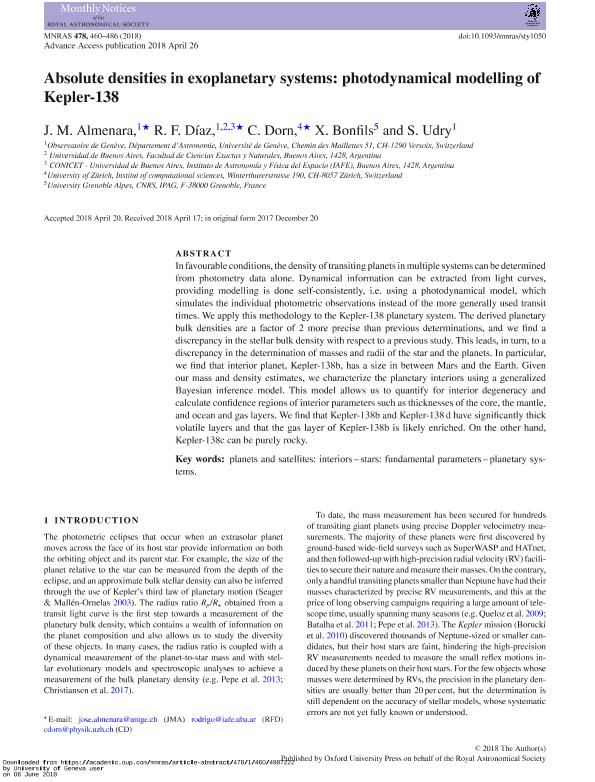Artículo
Absolute densities in exoplanetary systems: Photodynamical modelling of Kepler-138
Fecha de publicación:
07/2018
Editorial:
Wiley Blackwell Publishing, Inc
Revista:
Monthly Notices of the Royal Astronomical Society
ISSN:
0035-8711
Idioma:
Inglés
Tipo de recurso:
Artículo publicado
Clasificación temática:
Resumen
In favourable conditions, the density of transiting planets inmultiple systems can be determined from photometry data alone. Dynamical information can be extracted from light curves, providing modelling is done self-consistently, i.e. using a photodynamical model, which simulates the individual photometric observations instead of the more generally used transit times. We apply this methodology to the Kepler-138 planetary system. The derived planetary bulk densities are a factor of 2 more precise than previous determinations, and we find a discrepancy in the stellar bulk density with respect to a previous study. This leads, in turn, to a discrepancy in the determination of masses and radii of the star and the planets. In particular, we find that interior planet, Kepler-138b, has a size in between Mars and the Earth. Given our mass and density estimates, we characterize the planetary interiors using a generalized Bayesian inference model. This model allows us to quantify for interior degeneracy and calculate confidence regions of interior parameters such as thicknesses of the core, the mantle, and ocean and gas layers. We find that Kepler-138b and Kepler-138 d have significantly thick volatile layers and that the gas layer of Kepler-138b is likely enriched. On the other hand, Kepler-138c can be purely rocky.
Archivos asociados
Licencia
Identificadores
Colecciones
Articulos(IAFE)
Articulos de INST.DE ASTRONOMIA Y FISICA DEL ESPACIO(I)
Articulos de INST.DE ASTRONOMIA Y FISICA DEL ESPACIO(I)
Citación
Almenara, J. M.; Diaz, Rodrigo Fernando; Dorn, C.; Bonfils, X.; Udry, S.; Absolute densities in exoplanetary systems: Photodynamical modelling of Kepler-138; Wiley Blackwell Publishing, Inc; Monthly Notices of the Royal Astronomical Society; 478; 1; 7-2018; 460-486
Compartir
Altmétricas




